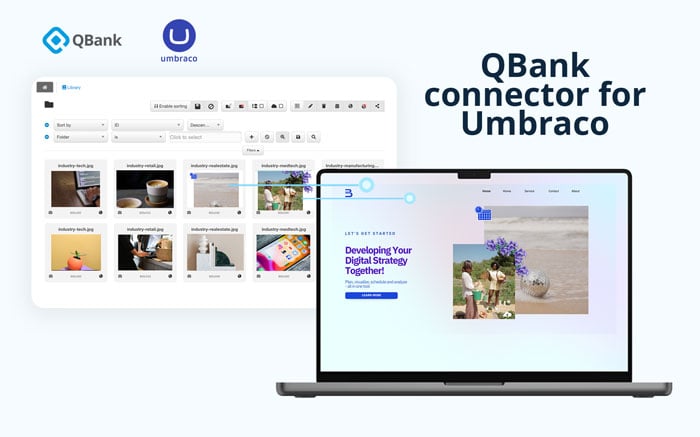MarTech is booming, and the digital landscape as we know it is changing. A recent report from ChiefMartec and MartechTribe shows a 24% jump in martech solutions (from 8000 to 9932) since 2020 and an astounding 6521% increase since the report’s first edition in 2011.
What does DXP mean?
A digital experience platform (DXP) is a platform that allows digital experiences to seamlessly connect across websites, apps, and other digital touchpoints that go beyond managing content.
The DXP emerged as a response to users’ growing needs for more personalised and streamlined experiences, and businesses’ capability to anticipate the actions and needs of their website visitors even before they realise it themselves.
What’s even better is that you can adopt your DXP to fit your business goals, as a monolithic platform (like a legacy or suite CMS), or a composable architecture.
What is a composable DXP?
Well, it does exactly what it says on the tin.
Where DXP is the foundation to manage all content and campaigns in a central hub, a composable DXP allows you to choose the MarTech software, tools and components you (or your clients) want, with the flexibility to switch them around wherever and whenever you need it - and ultimately design the digital experience platform that fits a business' needs like a glove.
This means that you have the freedom to compose your own DXP and use the tools of your choice, instead of relying on a single monolithic platform which tends to be bulkier, more expensive, and full of functionality that you never needed in the first place.
How does composable work?
Composable DXP applications are built out of individual components or so-called packaged business capabilities (PBCs) that are task-oriented and independently deployable. These can be anything from PIM, DAM, commerce, marketing software, to content management.
These components are seamlessly integrated via APIs to share content, products, user data, and insights across the components and deliver user-friendly, customised digital experiences to customers.
Why does it make sense?
Whether you are composing a symphony, or composing a strategy, you take all of the parts that make sense to use, and shuffle them around until they fit together the way you want them to. When the need arises for something new, they can just be added in. Add new things when needed, remove when they don’t make sense anymore.
The promise of composable DXPs
According to Vantara, composable DXP are:
- Composed of “only the best-of-breed tools that the company wants to use and is easily customizable.”
- Flexible to integrate different tools - tools that can be “easily and independently deployed and are purpose-built.” - into existing marketing stacks
- Agile, scalable, and help prioritize customer requirements.”
- Help provide an “effortless and high-quality customer experience across multiple mediums,” such as apps or website or physical stores, with their omnichannel approach.
- Future proof, enabling companies to “pivot quickly and provide better preparedness for any eventuality” without the “heavy commitments and larger investments” monolithic approaches demand.
Umbraco’s response to composable DXP
It all comes down to delivering better digital customer experiences and streamlining digital business processes and operations.
The 4 key arguments for adopting a composable DXP
You’re perhaps wondering - isn’t this a bigger task, more complex than we have the resources for? The answer is no - it really isn’t.
- The customer experience(s). If you are committed to bringing modern, personalised experiences for your customers, then composable truly is the way to go. A customised experience starts from a customised tech stack.
- Fast-tracked digital transformation. In case you were wondering - no, setting up a composable DXP is not a mammoth task that requires all of your resources at once. Start with what you need right now and build from there, keeping in line with your digital transformation strategy as you go. How? Seamlessly connect every corner of your business without the bulk, and streamline digital business processes and operations - getting you to market faster than ever.
- Freedom and flexibility. Bye-bye vendor lock-in. With a composable DXP, you’re in control of every aspect of your tech stack and have the freedom to keep it as agile as your needs change. Is a particular aspect of your solution becoming clogged or outdated? Swap it out. A new tool just got created that fits your needs exactly? Seamlessly integrate it where you need it. All in all, it means full flexibility to do what you want with your digital experience platform.
- More cost-effective than the alternative. Your budget will thank the agility a composable DXP brings. From the get-go, you don’t have to invest in major development off the bat; instead adapting as needs (and budgets) change. No more rehauls of your entire system to fix a minor problem, and no more clunky monolithic platforms that charge you for features you don’t even use! Your budget will thank you.

